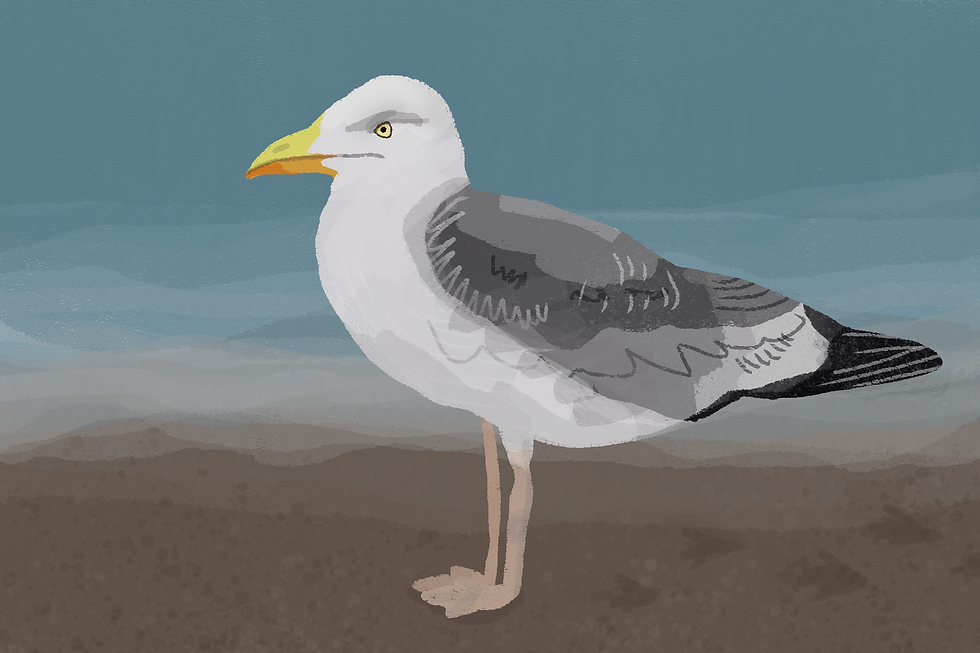Great Blue Heron
- Anne Longman
- May 5
- 2 min read
Week of 05.05.25
Great blue herons, or GBHs as they are affectionately referred to by some, are a common resident all across North America. These birds are members of the Ardeidae, or heron family, known for long legs, necks, and broad wings. Most herons reside near water, and the GBH is no different. Great blue herons can be found near wetlands, swamps, bogs, and rivers, but have adapted to enjoy urban life in ponds, fountains, and pools, too. They are physically large birds, standing close to four feet tall with a six foot wingspan. That is significantly larger than the average 2 year old human!
Did you know: despite their large size, herons only weigh 5 pounds! This is due to a common trait in birds: hollow bones.
Adult great blue herons are a blue-grey with white and black accents. Their beaks are long and yellow. When resting, a great blue heron will fold its neck into its body, condensing their appearance. In flight, their neck sticks out in an "s" shape, with their long legs dangling behind.

Heron behavior is odd. There is a uniquely prehistoric quality to their movements. When a heron locks in on prey, they become swift, precise, and laser-focused. Herons of all different kinds are casually referred to as "modern day dinosaurs". While they are not actually related to the pterodactyl or T. rex, great blue herons have existed as we know them for nearly 1.8 million years, with similar ancestors dating back to 14 million years ago.
Herons of all kinds are excellent fishers, thanks to a variety of special adaptations. A long, curved neck is specifically designed to strike out at prey. GBH necks contain 15 to 17 vertebrae, compared to 7 in a human. They are designed to allow for a comfortable "s" shape in a resting position. Herons stalk fish in shallow waters, walking carefully on their long, feather-less legs which keep them dry while hunting. When ready, the bird will strike and use its long beak to impale and snatch its next meal. Great blue herons can (and often do) eat still living animals.
Check out this video I got of a heron eating a live fish at an Illinois forest preserve.
Great blue herons have other special adaptations that make swamp life suitable for them, including powdery feathers. The front side of a heron is made up of down that protects them from accumulating slime and fish oil on their neck or chest. Living in a wetland is not clean, but herons certainly make the most of it.
In on the Northwest coast, seeing a heron is meant to be good luck. Native tribes in the area believe that seeing a blue heron before departing on a fishing trip means that the catch will be good and the trip will be successful. In other parts of the country, herons are viewed as symbols of grace, due to their elegant flight and stature.
Next time you are near the water, keep your eyes open for a GBH, and...
Have a great week!
----------------------------------------------------------
Sources:
Art by Anne Longman




Comments